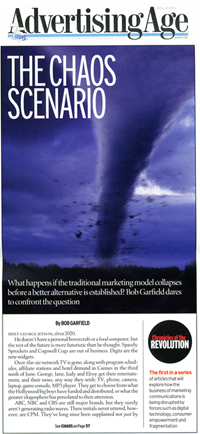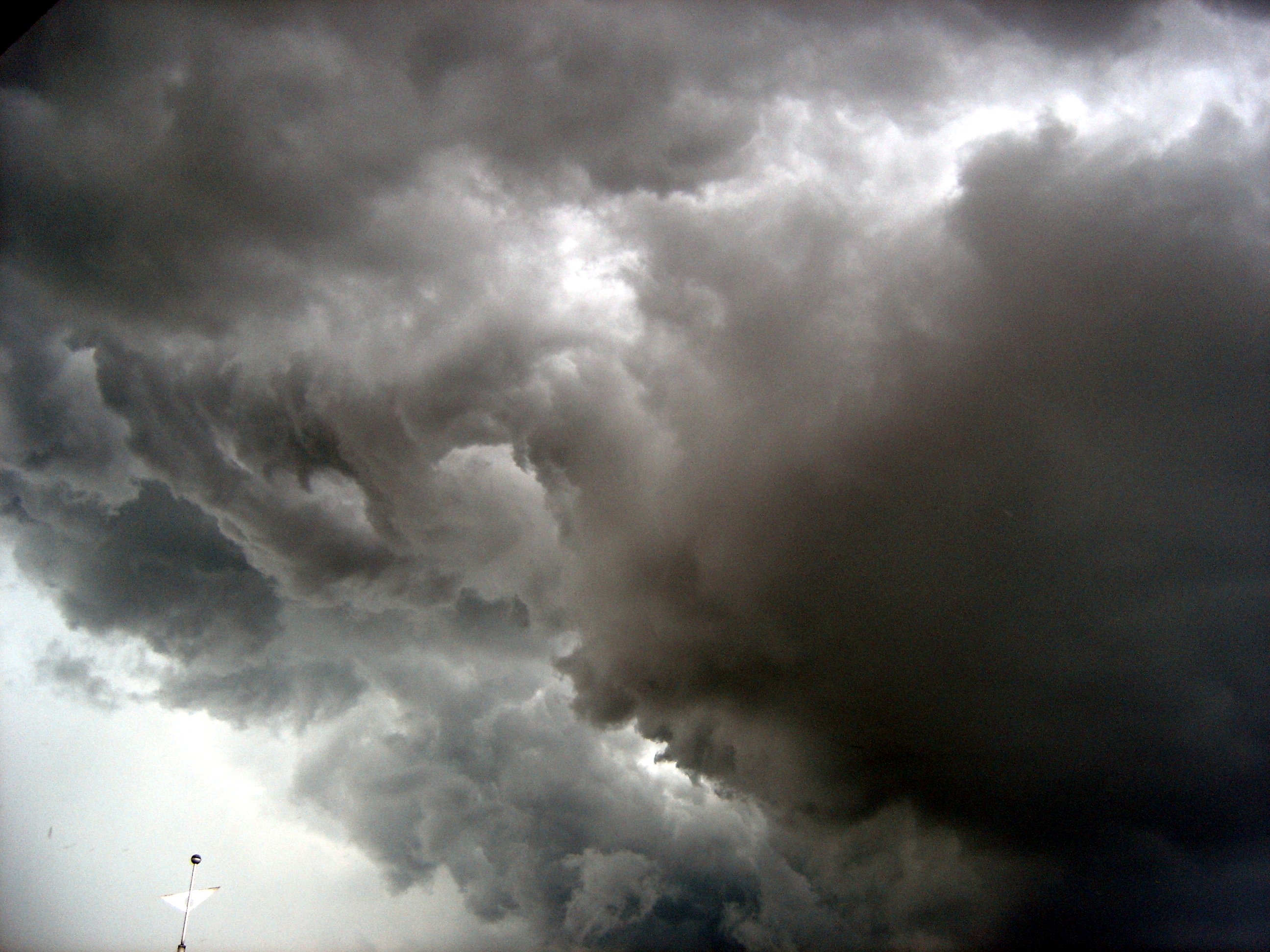Reading Time: About 4 minutes
My Monday morning ritual is deeply ingrained. I arrive early to find a stack of advertising and media trades to digest before launching into my client work for the week. One of those trades is AdWeek. I’ve been reading it for years but only recently noticed a new behavior on my part. When I come across the review of the week’s featured campaign I have to fire up my browser and search for the spot online so that I can view it. In years past this would have never been the case. I would have seen the spot during my television viewing. Lately, I can’t recall which advertisements I’ve seen on television.
In today’s New York Times, columnist David Carr pondered the strange paradox at play in the television business. The upfront advertising markets get bigger while live ratings for network programs continue to decline. Contrary to what you might think by looking at the data, the demand for television content is robust. Carr offers a personal opinion that may well characterize the whole market:
I continue to be a fan of (some) network television products; I just don’t consume them as they’re broadcast.
Instead of gathering on the couch at a pre-ordained time to enjoy the latest episode of their favorite show, audiences have developed a whole new set of behaviors. They may catch the week’s episode at a time of their choosing on their DVR, or they may grab it on the go from their iPad using Hulu, Netflix or YouTube. They may even wait until the season is over and watch all the episodes in sequence. There are more options available to the audience today than ever before. But for the advertiser, all viewing approaches have one element in common: they make it easier for the viewer to skip over or entirely ignore the advertising.
 Several years ago,
AdAge ran a front page cover story warning of the coming “Chaos Scenario.” The article painted a dire picture of the advertising landscape in 2020. That apocalyptic year is only a couple of Presidential elections away, yet the scenario described might plausibly unfold in an even nearer future.
Several years ago,
AdAge ran a front page cover story warning of the coming “Chaos Scenario.” The article painted a dire picture of the advertising landscape in 2020. That apocalyptic year is only a couple of Presidential elections away, yet the scenario described might plausibly unfold in an even nearer future.
The answer to the challenge isn’t a legal crack down on new distribution platforms. Advertisers and brands will not find solace by putting brakes on the speed of technological progress. We also won’t solve the problem by injecting more creativity into thirty second spots. Creative Week launches in New York City this week, and I’d like to make an appeal to the best of our industry. It’s never been more important for brands to re-imagine how they develop their stories with consumers. If there is one point we can be sure of by looking at the change in audience behavior and the demand for content, it’s that our passion for a good story hasn’t wavered. Traditional advertising interrupts the storytelling experience. Audiences now have a way to sidestep the interruptions. We won’t solve the problem by finding a clever way to force it into the experience. The problem will be solved when we find more creative ways to engage audiences around the story of the brand. And here’s the reality check: the answer to the problem may have nothing to do with sponsored content.
The audience and the markets have evolved.
Ironically, when I go to those spots I read about in AdWeek, many of them are so good at telling a story I enjoy them on their own merits. Today’s audiences are accustomed to watching short pieces they discover through social media links. Perhaps this is where the much heralded convergence of Madison Avenue and Hollywood should occur.
If you separate the current challenge into two separate parts, we may have a better path to resolution. The first part is the challenge of funding digital content. If television advertising as we know it today isn’t sustainable, how do you pay for the programming that audiences love? The fact of the matter is that audiences place a different value on content today than when television was introduced. Some audiences would rather pay for that content directly than tolerate commercial interruption (Hulu sells subscriptions and people rent through Netflix). The trick is to find ways to pay for the quality of content that audiences expect because current subscription revenue is insufficient. The answer may very well come from something other than advertiser-supported interests.
That leaves the other half of the problem: how to advertise to the modern consumer? Advertising is not a relic. It’s still a necessary part of a brand’s selling strategy. There’s plenty of pent-up demand for advertising vehicles. That’s why the upfronts keep getting bigger. But the television advertising model we’ve relied upon is becoming less relevant. Having spent the last 20 years working with some of the biggest advertisers in the world, I can attest that the model isn’t as effective as it once was. You have to reach wider and wider audiences to affect smaller and smaller returns on investment. Therefore, the challenge is to find a new advertising model. There may be no silver bullet. Instead, advertisers may have to be more creative in their approach. They may have to think about the way they are telling their story across a wide variety of advertising media—from social to broadcast, events to personal communications. The creativity we need more than ever is in the approach every brand takes to go to market.
I have always believed that the best brands are great storytellers. Unfortunately, many interpret that statement as meaning that the best brands can afford brilliant broadcast advertising campaigns. The truth is that great stories usually unfold in the minds of your consumers and your employees. So, to my colleagues who are about to spend several days stimulating their creative juices in New York, I offer a challenge: we need you to lead us to a new era of brand storytelling. Creativity has always thrived on chaos. We are told there’s plenty of it headed your way. Let’s use the dawn of an apocalypse to usher in a renaissance of brand storytelling. In the meantime, I’ll keep tuning into your advertisements on YouTube.

